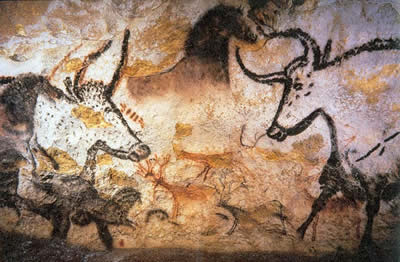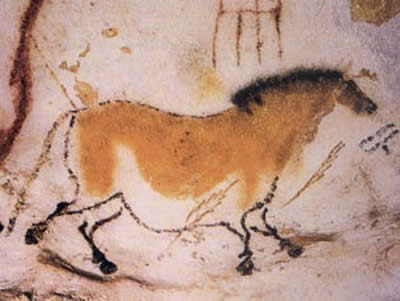LASSO
Well-regarded author Patricia O’Brien had produced 5 novels. But her last one hadn’t sold well, and her Simon & Shuster editor declined to publish her new one, “The Dressmaker”. A dozen more publishers also rejected the efforts of her well-known literary agent, Esther Newberg, to secure a contract for the book.
What was going on? Turns out O’Brien’s book was being rejected because her numbers had been lowered in Nielsen BookScan, a book sales tracking service, as a result of the performance of her most recent book. And the publishing house editors were making their publishing decisions based on that, rather than on the quality and potential of the new book itself.
Substituting data from a service such as Nielsen BookScan for actually evaluating what is being considered, is attractive to decision makers for at least a few reasons: 1) they can’t easily be criticized for the decision (numbers don’t lie, right?), 2) they need only put in enough effort to appear to have evaluated what’s being proposed, and 3) they will be viewed as fiscally responsible by their management chain. If the product succeeds, then … of course. If it fails, then – who knew – the data service numbers certainly seemed to indicate it would not succeed. What decider wouldn’t decide to decide that way?
But the problem is that relying on a data service creates a Gray Area by placing a set of data about previous book performance between the editor and the actual new book they’re supposedly evaluating.
Fight gray with gray
Back to the literary agent, Ms. Newberg. She could tell that the editors weren’t seeing past the Nielsen system numbers. So she decided to employ a gray area of her own. The only way to get the editors to see the truth of the situation was to obscure Ms. O’Brien’s recent numbers, and the only way to do that was to obscure the identity of Ms. O’Brien.
Remember Wonder Woman’s golden lasso? When she cast it around a person, the lasee had to speak and behave honestly. Ms. Newberg fashioned her lasso out of a nom de plume supplied by Ms. O’Brien, and then offered the book to publishers, as written by “Kate Alcott”.
Fictitious “Kate Alcott” was of course not to be found in Nielsen BookScan, which meant its numbers could no longer obscure the market potential of the book, itself. Editors were forced to actually give the book an honest read and make an honest decision accordingly.
It was gobbled up within 3 days. The book was deemed worthy of including rights for translation into 5 languages, in the deal. Ms. O’Brien was given a nice advance. And reviews were good enough that it went through two print runs before even being released. Strategy prevailed.
We could talk about reliance on Nielsen BookScan as being yet another publishing industry screw-up, telegraphing the industry’s demise, if that’s needed (don’t get me started …), but we’re here to talk strategy – right? So let’s have a look at Ms. Newberg’s strategy.
It was a simple and deft strategy, as seen in the diagram: substitute unknown author pseudonym for name of real author, so editors can’t use Nielsen BookScan, forcing evaluation based on merits of the book, resulting in a publishing deal.
The result was good for Esther Newberg, good for her client Patricia O’Brien, good for the publishing house Doubleday, good for her new editor Ms. Danaczko, good for the distributors and retailers that get to sell the book, and good for Ms. O’Brien’s readers. Well done.
LASCAUX
Another Gray Area story; this one about cave walls. We’ve all seen photos of the wonderful ancient paintings on the walls of caves in France and Spain, dating from as early as 30,000 years ago. The primary subjects are animals of the day: mainly big game such as bison, rhino, horses, lions, etc. The paintings carry so much energy, artistry and authenticity, and are so creative, that they’re positively riveting. It’s no wonder that they arrest the attention of viewers.
As you can see for yourself in the two pictures, it’s hard to take your eyes off them.
But if we do take our eyes off them for a minute, other interesting things begin to emerge: intentional, patterned markings, such as those over the snout of the Lascaux bull on the left, and over the horse’s neck and under its nose.
These things have been noticed in the past, but the paintings are so diverting that little had been made of the markings.
However Genevieve von Petzinger, whose research is on the origin of written language, has focused on the markings rather than the paintings, and has come up with some remarkable findings. After studying paintings in caves throughout France and Spain, she’s determined that many of the very same marking patterns are found in a great variety of different caves.
Moreover, Ms. von Petzinger found that the same markings sometimes differ in age by 15,000 years or more. This all suggests that the specific patterns had specific meanings to those making the marks, and those seeing them, and continued to do so for long stretches of time. And this in turn suggests the possibility that the marks were an early form of written language, established long before other theories would indicate.
There’s much more to be said about Ms. von Petzinger’s findings: presence of patterns in even earlier sites, controversies among advocates of competing theories, etc. But we mustn’t ourselves fall victim to interesting diversion, when that’s the very factor we’re pointing out that can make us miss important things in our environment – and make us miss the boat.
What has this to do with strategy? Something indirect but important. Poor strategies don’t just come from poor design; they often come from being based on wrong, insufficient, and/or irrelevant information. Our strategies won’t work if we’re not perceiving key information relevant to their success. The Gray Area in its many forms, in this case diversion of our attention from something important, is almost always operating. When we’re working with strategies, we’ve got to pay attention to paying attention. It’s just so easy to forget to do that …
_________________________________________
Readers are encouraged to add comments to this post.
And if you’d like to share or recommend the post, click on your preferred way in the left margin sidebar.
The next post planned is on Strategy Types – a way of recognizing them when you see them.
If you’re not currently being automatically notified when new posts are published, then please Follow Real Strategy (top of right hand column on this page), and indicate how you’d prefer to be notified.
For other posts of interest, look in the Smart Menu.
For further reading related to this post:
- See publishing incident article (22 Feb ’12) and others written by JULIE BOSMAN for the New York Times
- See article on cave markings (10 Mar ’12) and other science & technology articles written by Robin McKie for The Observer
Photo credit: Agent Newberg Roping In an Editor, from Steve Garcia. See his Wonder Woman photostream at www.flickr.com/photos/wondersteve1972/
Photo credit: Lascaux Bulls, Lascaux Horse, from anonymous author on strange website Odee.









